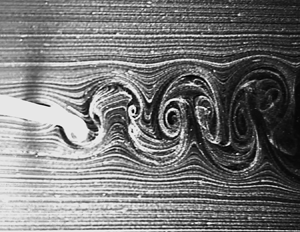Crossref Citations
This article has been cited by the following publications. This list is generated based on data provided by
Crossref.
Mousavisani, Seyedmohammad
Chowdhury, Naumi Noshin
Samsam-Khayani, Hadi
Samandari, Hamed
and
Seyed-Aghazadeh, Banafsheh
2022.
Vortex-induced vibration of a two degree-of-freedom flexibly mounted circular cylinder in the crossflow direction.
Journal of Fluid Mechanics,
Vol. 952,
Issue. ,
Mousavisani, Seyedmohammad
Castro, Giancarlos
and
Seyed-Aghazadeh, Banafsheh
2022.
Experimental investigation on flow-induced vibration of two high mass-ratio flexible cylinders in tandem arrangement.
Journal of Fluids and Structures,
Vol. 113,
Issue. ,
p.
103640.
Gao, Yue
Zhu, Hongjun
Li, Quanhua
Hu, Jie
Zhou, Tongming
and
Shao, Yongbo
2022.
An insight into the interaction between the in-plane and out-of-plane responses of a catenary flexible riser.
Physics of Fluids,
Vol. 34,
Issue. 10,
Zhu, Hongjun
Zhang, Xu
Zhao, Honglei
Xie, Yipu
Tang, Tang
and
Zhou, Tongming
2023.
Experimental investigation on the vortex-induced vibration of an inclined flexible pipe and the evaluation of the independence principle.
Physics of Fluids,
Vol. 35,
Issue. 3,
Aasland, Tale E.
Pettersen, Bjørnar
Andersson, Helge I.
and
Jiang, Fengjian
2023.
Flow topology in the gap and wake of convex curved tandem cylinders.
Journal of Fluid Mechanics,
Vol. 976,
Issue. ,
Zhu, Hongjun
Liu, Wenli
Gao, Yue
Ji, Chunning
Liu, Hong
and
Zhou, Tongming
2023.
An experimental investigation on the vortex-induced vibration mode transition and response interaction of a fixed–hinged catenary flexible riser.
Physics of Fluids,
Vol. 35,
Issue. 1,
Yao, Weiguang
Jia, Xiaoyu
Zhang, Hui
and
Gui, Mingyue
2023.
Suppression of vortex-induced vibration of an elastically mounted sphere by electromagnetic force.
Physics of Fluids,
Vol. 35,
Issue. 9,
Samsamkhayani, Hadi
Dulac, Sarah
Khazaee Kuhpar, Mostafa
and
Seyed-Aghazadeh, Banafsheh
2023.
Time-resolved volumetric flow measurements around a flexible airfoil undergoing flow-induced vibration.
Samsam-Khayani, Hadi
and
Seyed-Aghazadeh, Banafsheh
2024.
Fluid–structure–surface interaction of a flexibly mounted pitching and plunging flat plate in proximity to the free surface.
Journal of Fluid Mechanics,
Vol. 984,
Issue. ,
Liu, Depeng
Ai, Shangmao
Sun, Liping
and
Guedes Soares, C.
2024.
Vortex-induced vibrations of catenary risers in varied flow angles.
International Journal of Mechanical Sciences,
Vol. 269,
Issue. ,
p.
109086.
Mousavisani, Seyedmohammad
Samandari, Hamed
and
Seyed-Aghazadeh, Banafsheh
2024.
Experimental investigation of flow-induced vibration and flow field characteristics of a flexible triangular cylinder.
Journal of Fluid Mechanics,
Vol. 979,
Issue. ,
Ruan, Li
Zhu, Hongzhong
and
Hu, Changhong
2024.
A study on vortex-induced vibration of a long flexible catenary cable in perpendicular flow.
Ocean Engineering,
Vol. 305,
Issue. ,
p.
117937.
Zhu, Hongjun
Liu, Wenli
Gao, Yue
Deng, Kairui
and
Zhou, Tongming
2024.
Experimental investigation on the vortex-induced vibration response of a lazy-wave flexible riser filled with different fluid media.
Physics of Fluids,
Vol. 36,
Issue. 3,
Benner, Bridget M.
Carleton, Adrian G.
and
Modarres-Sadeghi, Yahya
2025.
Transition from vortex-induced vibrations to galloping in a flexible square prism.
Journal of Fluid Mechanics,
Vol. 1007,
Issue. ,
Sun, Qiji
Xu, Chenxi
Zou, Xuan
Guan, Wei
Liu, Xiao
Yang, Xu
and
Ren, Ao
2025.
Shape Optimization of the Triangular Vortex Flowmeter Based on the LBM Method.
Symmetry,
Vol. 17,
Issue. 4,
p.
534.
Qu, Yang
Xu, Wenjie
Fu, Shixiao
and
Song, Yue
2025.
Vortex-induced vibrations of an elastically supported rigid cylinder in a dual-mass system.
Journal of Sound and Vibration,
Vol. 602,
Issue. ,
p.
118940.

 $R/D=66$, and a low mass ratio of
$R/D=66$, and a low mass ratio of  $m^{*} = 3.6$. A high-speed imaging technique was employed to record the oscillations of the cylinder in the cross-flow direction for a reduced velocity range of
$m^{*} = 3.6$. A high-speed imaging technique was employed to record the oscillations of the cylinder in the cross-flow direction for a reduced velocity range of  $U^{*} = 3.7 - 48.4$, corresponding to a Reynolds number range of
$U^{*} = 3.7 - 48.4$, corresponding to a Reynolds number range of  $Re= 165 - 2146$. Mono- and multi-frequency responses as well as transition from low-mode-number to high-mode-number oscillations were observed. Regardless of the type of curvature, both odd and even mode shapes were excited in the cross-flow directions. However, the response of the system, in terms of the excited modes, amplitudes and frequencies of the oscillations, was observed to be sensitive to the direction of the curvature (i.e. concave vs convex), in particular at higher reduced velocities, where mode transition occurred. Hydrogen bubble flow visualization exhibited highly three-dimensional vortex shedding patterns in the wake of the cylinder, where there existed spatial and temporal evolution of the vortex shedding modes along the length of the cylinder. The time-varying intermittent vortex shedding in the wake of the cylinder was linked to the spanwise travelling wave behaviour of the vortex-induced vibration response. The observed spatially altering wake corresponded to the multi-modal excitation and mode transition along the length of the cylinder.
$Re= 165 - 2146$. Mono- and multi-frequency responses as well as transition from low-mode-number to high-mode-number oscillations were observed. Regardless of the type of curvature, both odd and even mode shapes were excited in the cross-flow directions. However, the response of the system, in terms of the excited modes, amplitudes and frequencies of the oscillations, was observed to be sensitive to the direction of the curvature (i.e. concave vs convex), in particular at higher reduced velocities, where mode transition occurred. Hydrogen bubble flow visualization exhibited highly three-dimensional vortex shedding patterns in the wake of the cylinder, where there existed spatial and temporal evolution of the vortex shedding modes along the length of the cylinder. The time-varying intermittent vortex shedding in the wake of the cylinder was linked to the spanwise travelling wave behaviour of the vortex-induced vibration response. The observed spatially altering wake corresponded to the multi-modal excitation and mode transition along the length of the cylinder.